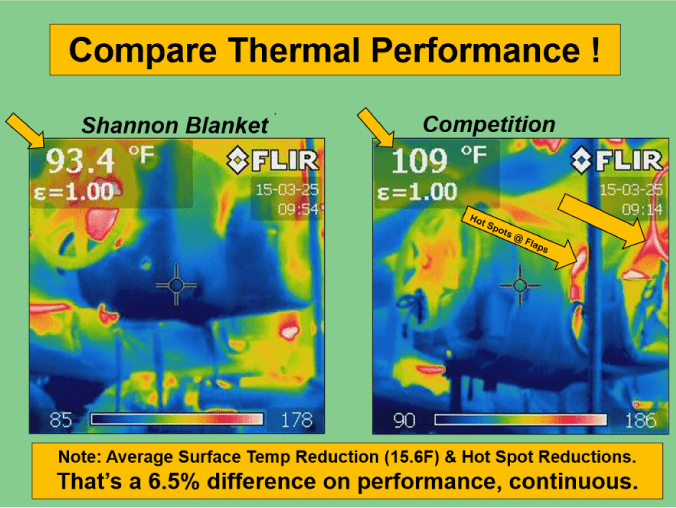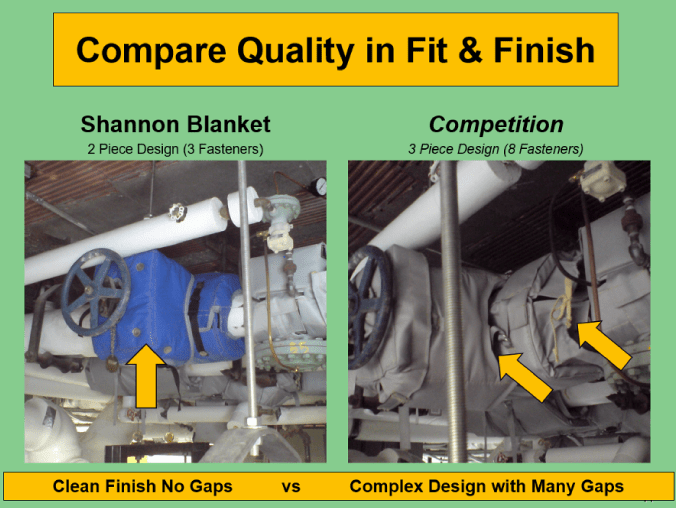K-Factor measures the performance of industrial insulation, specifically its ability to conduct heat. In other words, K-Factor measures thermal conductivity. So, insulation buyers want an insulation material with a low K-Factor. Insulation makers calculate K-Factor as the units of Btu-inch/hour per square foot per degree F, also expressed in terms of W/mK. K-Factor relates to how good a conductor the insulation material is. A thicker sample of the material doesn’t change its K-Factor.
When picking material for industrial insulation, look for something with a low thermal conductivity or K-Factor. For example, fiberglass has a K-Factor of between .22 and .30, whereas rigid foam urethane has a K-Factor of .11 to .16. A material must have a K-Factor of 0.5 or less to be thermal insulation, says the National Roofing Contractors Association. For comparison, consider copper, which has a K-Factor of 401 W/mK, versus sheepwool at .04 W/mK.
In contrast to K-Factor, R-value measures a material’s thermal resistance. So, the thickness of an insulation material matters when calculating its R number. For example, two inches of fiberglass, mineral wool, foam glass or elastomeric foam will have twice the R-value as a one-inch thick sample of these materials. In other words, an effective thermal insulation will be remarkably good at resisting heat while very poor at conducting it.
The importance of testing
Facility managers should consider K-Factor when they buy an insulation blanket for a component or piece of equipment on their system. Along with picking insulation material with the appropriate K-Factor, an insulation blanket buyer should look for manufacturers who’ve tested the materials they’re selling against ASTM, UL and ISO specifications and standards. Testing delivers an accurate K-Factor.
Most insulation manufacturers test their products. But they often isolate material, which means the test has a value of performance apart from how it works when joined with jacketing and wrapped on a component. When blanket insulation manufacturers take insulation material and add an inner and outer jacketing, closing seam, and fasteners, the thermal insulation dynamic changes. And when blanket insulation manufacturers combine the insulation material with a finished design, or blanket system, the conscientious manufacturer should again test for K-Factor. Testing an isolated insulation material versus a blanket system results in a different thermal value. Keep in mind, with so many insulation energy surveys promoting energy savings, these values are meant to drive accurate savings performance. That’s why Shannon Global Energy Solutions spends the time and money to test its many blanket designs and calculate each system’s varying performance. Testing blanket designs is the key to accurately measuring performance.
With testing, the crux of the matter is this: The context, or blanket system, into which a manufacturer places insulation material affects its K-Factor. Insulation buyers need a dependable calculation for heat loss or energy saving. So, insulation makers must correctly test their blanket system, including internal material, to assess thermal energy conductivity.
Final thoughts
It’s important to ask about the insulation material inside a removable, reusable insulation blanket. But even with a low K-Factor, a reusable insulation blanket won’t conserve energy unless its maker designs it specifically for the intended application and manufactures the insulation blanket according to ASTM, ISO and UL standards and specifications. A manufacturer who uses a CAD/CNC approach to design and make insulation systems delivers a quality product that saves energy. If the blanket design does not correctly overlap existing insulation, or if the blanket design leaves open gaps and hides uninsulated surfaces by use of fabric flaps with no insulation value, then the thermal insulation problem is compounded. A quality fit and finish impacts, among other things, energy efficiency. And that’s the ultimate value. So, when considering the final result, review the specification, both the design performance in materials and fit and finish.
For added guidance, visit Thermal Blanket & Shield Specifications


